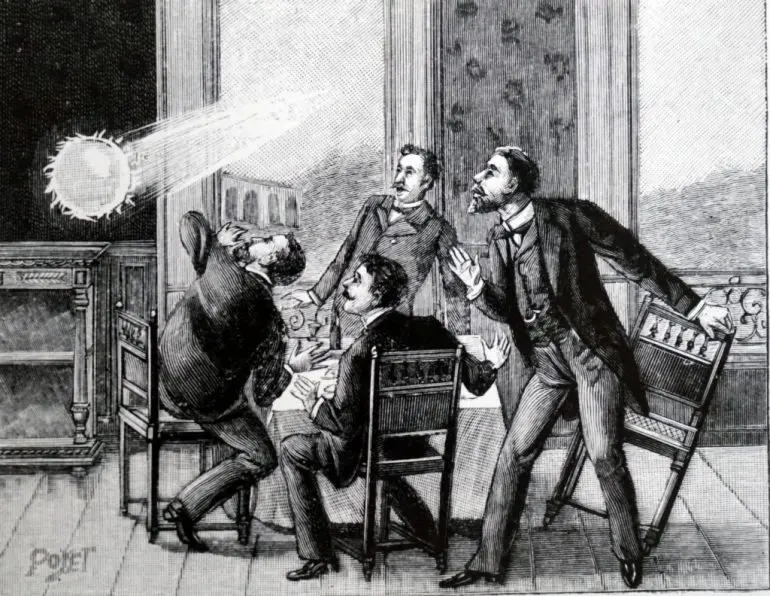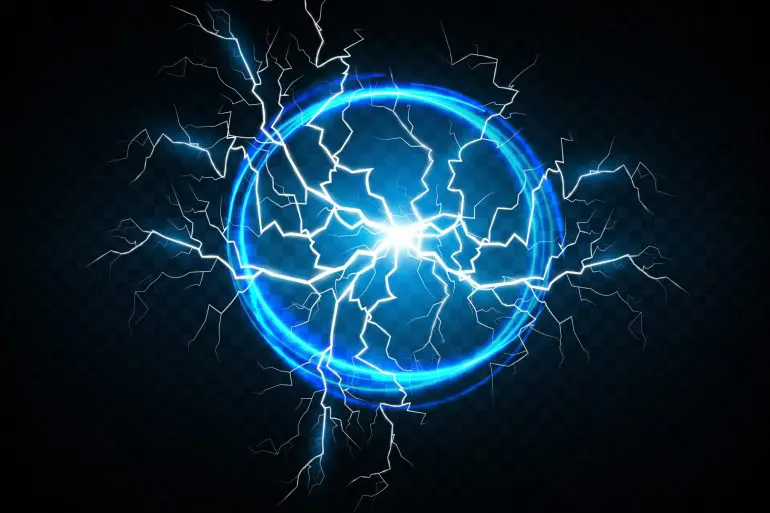The concept of a floating ball of lightning appearing out of thin air seems like the stuff of science fiction. Yet, for centuries, there have been thousands of reports of hovering, glowing orbs, usually materialising during thunderstorms only to vanish soon after. The phenomenon is known as ball lightning or spherical lightning and has baffled scientists for hundreds of years.
So, what is ball lightning? Has science managed to explain these strange and elusive accounts? Or is it all an illusion? The answers might just blow you away.
Sightings of Ball Shaped Lightning

Occulist, writer, and mountaineer Aleister Crowley (Credit: Underwood Archives via Getty Images)
On 7 June 1195 in Canterbury, Kent, a Benedictine monk by the name Gervase was awed by the sight of a fiery globe emerging from a dark cloud before spinning and hurtling towards a river. He wasn’t the first to witness such a phenomenon, and he wouldn’t be the last. However, his is the earliest known reliable written account of ball shaped lightning. Since then, there have been thousands of reports of floating lightning balls. Occultist Aleister Crowley and Tsar Nicholas II of Russia are among other notable names to have reported such sightings, but there are plenty besides, many witnessed by entire crowds.
There’s also a good deal of documentation. Like the poem written by schoolmaster Robert Hill who witnessed a floating ball of lightning at the church of Widecombe-in-the-Moor in Devon during the Great Thunderstorm of 1638. He ascribed it to Satan. What’s more, it’s possible that other beliefs and mythologies were based on seeing such things. For instance, some suggest that the same thing might be behind stories of the Anchimayens creatures in Mapuche mythology, said to transform into flying balls of fire.
Characteristics of Ball Lightning

Ball lightning at the Hotel Georges du Loup (Credit: Universal History Archive/Universal Images Group via Getty Images)
It’s been described as ball shaped lightning, but, digging into the details, there’s more to this phenomenon than a glowing orb suspended in mid-air. It’s said that, on average, ball lightning tends to measure around 12 inches in diameter and is about as bright as a 100-watt bulb, lasting around ten seconds before vanishing quietly or explosively. More generally, the characteristics of spherical lightning include:
- Shape: A luminous, spherical object
- Size: Ranges from the size of a golf ball to that of a beach ball or even bigger
- Colour: It can appear in various colours, including yellow, orange, red, and blue
- Duration: Unlike traditional lightning, which discharges in a fraction of a second, each floating ball of lightning can persist anywhere from several seconds to over a minute
- Behaviour: They float through the air, navigate around obstacles, or enter homes through chimneys or windows. There are accounts of ball-shaped lightning passing through closed windows and doors without leaving marks or causing damage, only to explode quietly inside a room. Others report electrical or magnetic effects, such as causing appliances to malfunction or leaving a sulphur-like smell
- Occurrence: They’re usually associated with thunderstorms, but have been known to form without them
- Sound and smell: Ball lightning is commonly said to be accompanied by a hissing noise and an ozone smell
Theories

Qinghai-Tibet Plateau from the Space Shuttle (Credit: Heritage Images / Contributor via Getty Images)
Despite the challenges in studying ball lightning, advancements in technology and a growing body of eyewitness accounts have enabled scientists to make some headway. High-speed cameras, atmospheric sensors, and improved theoretical models have all contributed to the understanding of this phenomenon. Theories abound on the nature and cause of spherical lightning, including:
The Visual Perception Hypothesis
With its unpredictability and fleeting nature, there have been those who have doubted its existence. In 2010, one study pointed out that visual perception can be altered by the electricity in lightning, specifically causing witnesses to see bright disks for a time. However, this would only account for some reports and wouldn’t explain reported smells or the damage left behind in other cases. What’s more, in 2012, scientists in China managed to record footage and spectral readings of ball lightning. They’d been investigating linear lightning on the Qinghai Plateau in northwest China when the phenomenon occurred.
The Plasma Hypothesis
One popular theory suggests that ball lightning is a form of plasma, a state of matter similar to gas but with some of its particles ionised. This plasma could form when a lightning strike vaporises silicon present in soil, releasing a cloud of silicon nanoparticles that, through some unknown process, become electrically charged and form the glowing ball. The findings of the aforementioned Chinese researchers in 2012 seem to support this. Their readings found several elements usually abundant in soil within the lightning ball.
The Maser-Soliton Theory
The Maser-Soliton Theory explains ball lightning as a natural microwave light show, similar to a laser but with microwaves. A laser works by getting atoms or molecules so excited that when they calm down, they release light. A maser is like a laser, but instead of visible light, it works with microwaves, which are a type of invisible light.
So, when regular or “streak lightning” strikes, it energises water molecules in the air, making them spin and rotate like tiny magnets. According to this theory, a prerequisite of spherical lightning is that more water molecules are in an excited, or energetic, state than in a calm state, known as a “population inversion.” When they calm, these molecules emit microwaves. As long as the microwaves cannot escape, a large enough space with enough air, these microwaves can amplify each other and form a glowing, electrical bubble called a soliton, which we see as a floating ball of lightning. The important thing is that the space is big enough, but that the molecules cannot escape.
There’s some evidence that microwaves may be involved in the formation of ball lightning. In 2006, scientists at Tel-Aviv University even managed to create a lightning ball of around an inch in diameter for 10 milliseconds using a microwave drill.
Ball Lightning versus St. Elmo’s Fire

St. Elmo’s Fire, as seen from the cockpit of a plane. (Credit: ajansen via Getty Images)
One weather phenomenon often confused with ball lightning is known as St. Elmo’s Fire, a blue or violet glow that can appear around pointed objects during thunderstorms and volcanic eruptions. However, there are distinct differences between the two. Firstly, while spherical lightning appears as a free-floating sphere that can move independently, St. Elmo’s Fire is static and attached to pointed objects. Secondly, unlike with ball lightning, scientists have explained St. Elmo’s Fire. It occurs when a sharp or pointed object is subjected to a strong electric field in the atmosphere, causing the ionisation of air molecules near that object. This, in turn, creates a continuous electric spark known as a corona discharge and a visual glow. It has often occurred near aeroplane wings and ship masts, hence it being named after the patron saint of sailors.
Keeping the Ball Rolling

An illustration of ball lightning on a transparent dark blue background. (Credit: ANDRII CHABAN via Getty Images)
As we’ve seen, there are some questions even the most advanced technology and greatest minds have yet to answer. And spherical lightning is one of them. But they seem to be making progress. Whether it’s a lucky strike like that of the 2012 recording or the lab formation of a lightning ball, it’s generally agreed that this strange, otherworldly concept is indeed the work of nature and does have an identifiable scientific explanation, even if the details aren’t quite confirmed at this point in time.












